RCA LATRINE
- Features of RCA latrine:
1.The squatting plate
2.The pan
3.The trap
4.Connecting pipe
5.Pit or dug well
6.Superstructure
7.Maintenance
- LOCATION:
The safe distance between the latrine and a source of water supply will depend upon the porosity of the soil, level of ground water, its slope and direction of flow.
In general, it may be stated, that latrines of any kind should not be located within 15 m (50 ft) from a source of water supply, and should be at a lower elevation to prevent the possibility of bacterial contaminate On of the water supply
Where possible, latrines should not be located in areas usually subject to flooding.
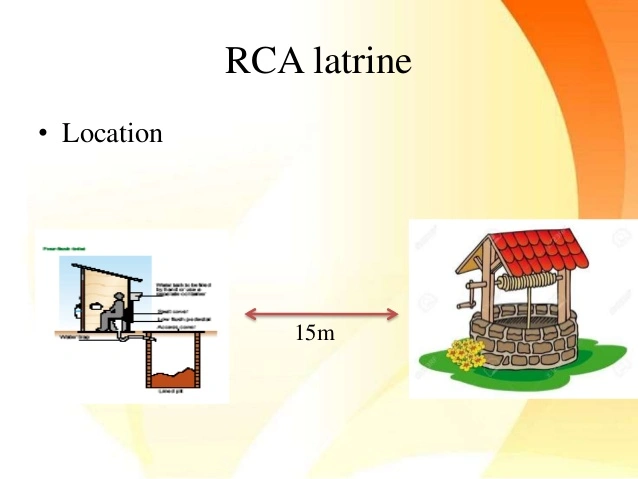
- SQUATTING PLATE:
The squatting plate or slab is an important part of a latrine. It should be made of an impervious material so that it can be washed and kept clean and dry.
If kept dry, it will not facilitate the survival of hookworm larvae.
In recommending squatting plates, due consideration should be paid to the habits of Indian people who defecate in the squatting position and use water for anal washing.
The slab of the RCA latrine has been designed to meet the above needs.
It is made of cement concrete with mm1 mum dimensions of 90 cm (3 ft) square and 5 cm (2 in.) thickness at the outer edge.
There is a slope 1/2 inch towards the pan. This allows drainage into the latrine of the water used for ablution or cleansing purposes.
A circular squatting plate of 90 cm (3 ft.) diameter and of 5 cm (2 in.) uniform thickness, has also been found satisfactory. For the convenience of the users, raised footrests are included in the squatting plate.
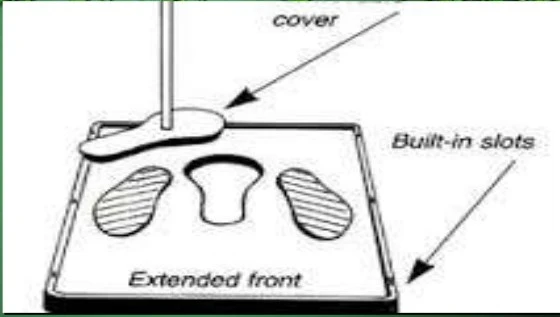
- PAN:
The pan receives the nightsoil, urine and wash water.
The length of the pan is 42.5 cm (17 in.).
The width of the front portion of the pan has a minimum of 12.5 cm (5 in.) and the width at its widest portion is 20 cm (8 in.).
There is a uniform slope from front to back of the pan. The pan is given a smooth.
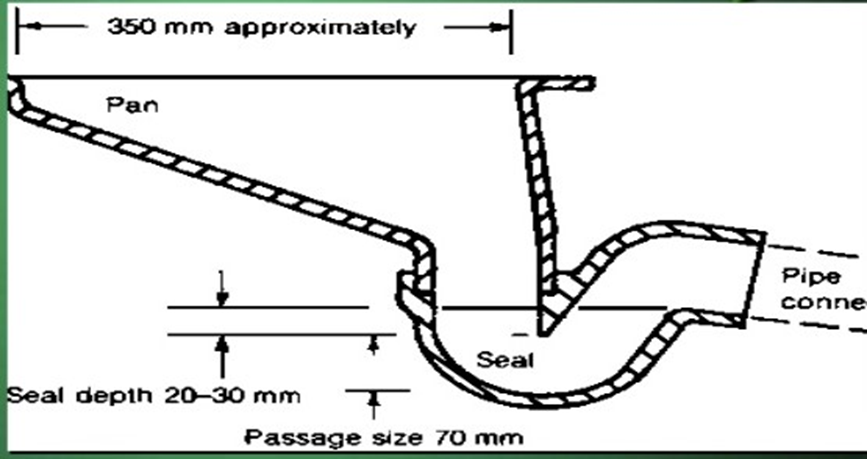
- TRAP:
The trap is a bent pipe, about 7.5 cm (3 in.) in diameter and is connected with the pan.
It holds water and provides the necessary ‘water seal’. The water seal is the distance between the level of water in the trap and the lowest point in the concave upper surface of the trap.
The depth of the water seal (AB) in the RCA latrine is 2 cm (3/4 in.
The water seal prevents the access by flies and suppresses the nuisance from smell.
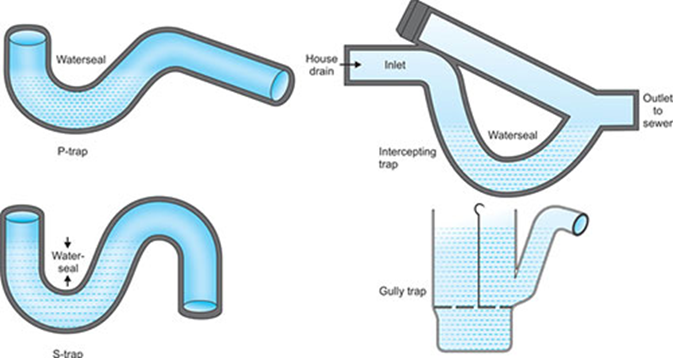
- CONNECTING PIPE:
When the pit is dug, away from the squat plate, the trap is connected to the pit by a short length of connecting pipe 7.5 cm (3 in.) in diameter and at least 1 m (3 ft.) in length with a bend at the end .
A latrine of this type is called the Indirect type because the pit is sited away from the squatting plate.
In the direct type there is no need for a connecting pipe .
The direct type is best suited for areas where the ground is hard and does not easily cave in.
The direct type is cheaper and easier to construct and occupies less space .
An advantage with the indirect type is that when the pit fills up, a second pit can be put into operation by merely changing the direction of the connecting pipe. Therefore, the indirect type is usually preferred.
- DUG WELL
The dug well or pit is usually 75 cm (30 in.) in diameter, and 3 to 3.5 m (10-12 ft.) deep and is covered.
In loose soil and where the water table is high a lining of earthenware rings or bamboo matting can be used to prevent caving in of the pit.
When the pit fills up, a second pit is dug nearby and the direction of the connecting pipe is changed into the second pit. When the second pit fills up, the first one may be emptied and reused.
- SUPERSTRUCTURE:
The desired type of superstructure may be provided for privacy and shelter.
An attractive superstructure with a neat finish is desirable as this will be generally well maintained.
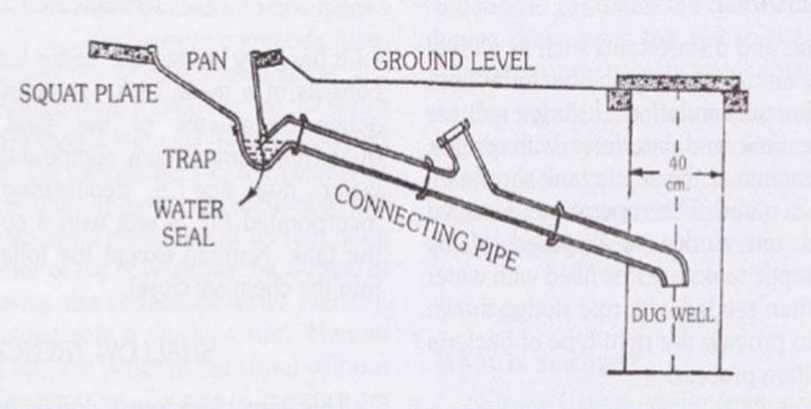
- MAINTENANCE:
The life of a latrine will depend upon several factors such as care in usage and maintenance.
The latrine should be used only for the purpose intended and not for disposal of refuse or other debris.
The squatting plate should be washed frequently and kept clean and dry.
People should learn to flush the pan after use with adequate quantity of water.
One to two liters of water are sufficient to flush the RCA latrine.
Thus, proper maintenance involves health education of the people which is very necessary for the success of any latrine.
